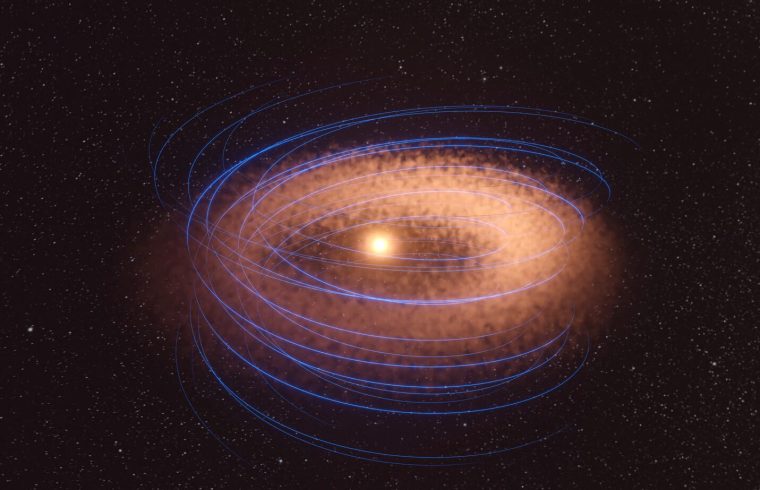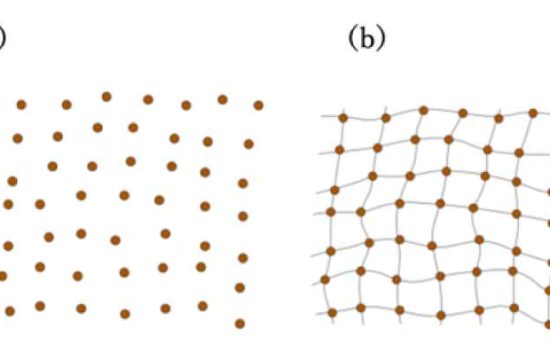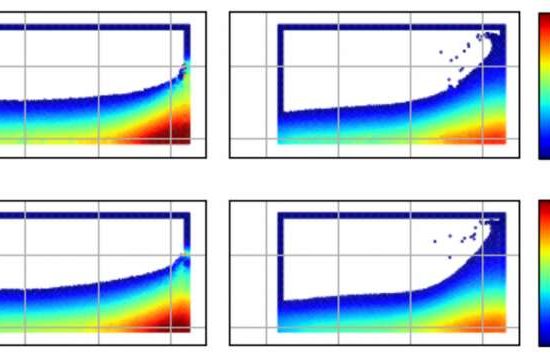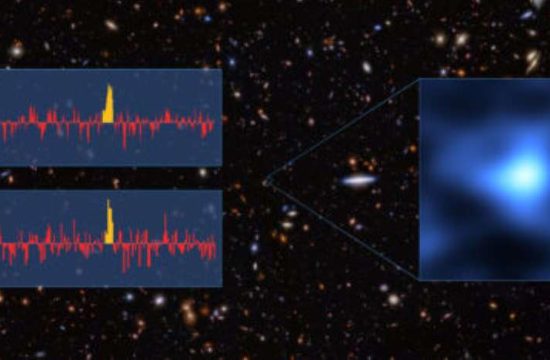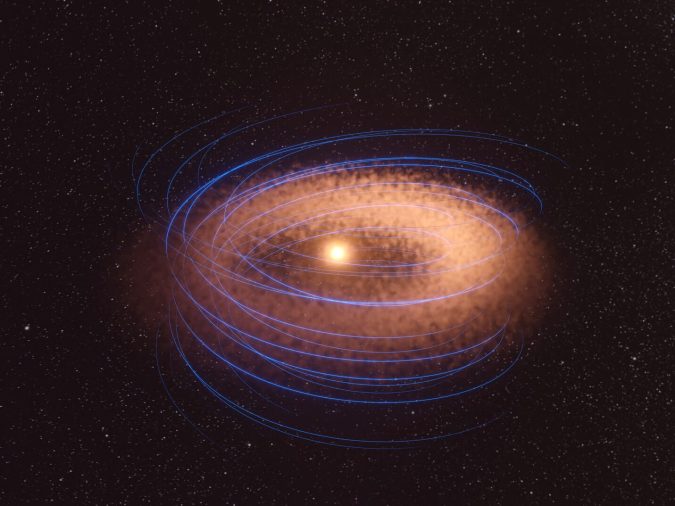
For the first time, researchers have measured the magnetic field structure in a protoplanetary disk based on the Atacama Large Millimeter/submillimeter Array (ALMA) multi-band observations of dust polarization.
A research team led by Project Assistant Professor Satoshi Ohashi (NAOJ) investigated the dust polarization in the protoplanetary disk around a young star, HD 142527, by analyzing ALMA 0.9, 1-, 2-, and 3-mm observation data.
As a result, they have discovered intense dust polarization primarily due to the magnetic field. Furthermore, they successfully estimated the magnetic field’s strength and three-dimensional structure. This research can help understand magnetic fields’ role in planet formation.
To study the origin of life, it is important to understand how Earth-like planets form. It has been thought that a planet forms by gradually accumulating interstellar dust and gas within a protoplanetary disk surrounding a young star. However, there are still many mysteries about the environment of planet formation and physical conditions inside the protoplanetary disk.
One of those mysteries is the magnetic field. It is thought to be a crucial factor in determining the turbulence and the movement of matter in a protoplanetary disk.
Nevertheless, observing the magnetic field in a protoplanetary disk has been challenging. The magnetic field is an invisible vector field produced by a magnet or electric current. The magnetic field influences matter and energy like Earth’s magnetic field. This invisible force exists everywhere in the Universe and has much to do with star and planet formation.
HD 142527 is a protoplanetary disk with many dust particles gathering in the north part (the upper side in Figure 1), where planets are forming.
Ohashi and his research group carried out ALMA 3 mm observations of dust polarization in the protoplanetary disk around HD 142527. They analyzed the polarization mechanisms by combining their new data with the archived data of ALMA 0.9, 1-, and 2-mm observations of HD 142527. They found, in the south part as shown on the lower side in Figure, the same polarization pattern in all the observed wavelengths, suggesting that this characterized polarization pattern (the polarization vector is the same as the radial direction of the disk and has intense polarization over 10%) is caused by the magnetic field.
In addition, the research group found that the direction of the magnetic field varies slightly along the rotation direction of the disk. They thought that the magnetic field’s three-dimensional structure caused these changes in direction. They estimated that the strength of the magnetic field is about 0.3 milligauss along the rotation direction and about 0.1 milligauss in both the vertical direction and the direction toward the central star. The team suggests that this three-dimensional structure might create a strong turbulence field within the disk.
Many protoplanetary disks have been found, but this is the first time the magnetic field’s detailed structure can be observed. Interestingly, it was not theoretically expected that the magnetic field would have a certain level of strength toward the central star and in the vertical direction of the disk around a young star like HD 142527; therefore, further investigations are needed.
Satoshi Ohashi says, “We have found the conditions to observe the magnetic field in a protoplanetary disk and provided a method to measure the three-dimensional structure and the strength of the magnetic field. Therefore, our findings can be a huge help to future observations of the magnetic fields of the protoplanetary disks.”
“On the other hand, during the formation of planets like the Earth, in highly turbulent conditions, interstellar dust grains collide with each other at high speeds, destroying themselves, which might prevent planets from forming,” Ohashi added.
“While we observed the magnetic field relatively far from the central star this time, it will be important in the future to observe the magnetic fields at the formation places of planets close to the central stars, like the Earth. Our findings will pave the road to future research on how the magnetic field influences planet formation”.


